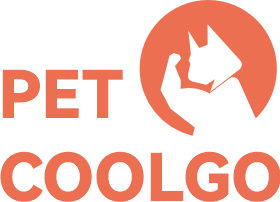Every dog owner wants their pet to live a long, healthy life. A balanced diet is key, and some nutrients are extra important. One of these is omega-3 fatty acids. This powerful nutrient can help with everything from a shiny coat to comfortable joints. This guide explains what omega-3 for dogs is, why it is so important, and how to find the best sources and food to keep your furry friend happy and active.
What Is Omega-3 and Why Do Dogs Need It?
Omega-3 fatty acids are a type of essential fat. This means your dog’s body cannot make enough of them on its own. They must come from food. These important nutrients play a big role in keeping your dog healthy by managing inflammation and helping cells work right. There are three main types of omega-3 for dogs: EPA, DHA, and ALA.
EPA and DHA are the most useful forms of omega-3 for dogs. They come mostly from the ocean, in cold-water fish, and the body can use them easily. ALA comes from plants like flaxseed. ALA is good, but dogs are not very good at changing it into the more useful EPA and DHA. So, sources from the ocean are the better choice for giving your dog direct health benefits.
3 Key Benefits of Omega-3 for Dogs
The benefits of omega 3 for dogs are many and help almost every part of their body. These fatty acids are best known for reducing inflammation. This helps manage and lower the symptoms of many health problems.
1. Improved Skin and Coat Health
One of the most obvious benefits is healthier skin and coat. Omega-3s help make the skin barrier strong. This reduces dryness, flakes, and itching that often come from allergies or dry air. They also help make the coat shinier, softer, and fuller by feeding the hair. For dogs with skin allergies, these fatty acids can help soothe the skin and make the allergic reactions less bad.
2. Support for Joint Health
The power of omega-3s to lower inflammation is very good for joint health. For older dogs with arthritis or younger dogs with joint problems, EPA and DHA can help lower joint inflammation. This leads to less pain and better movement. This makes it a good thing to add to the diet of active dogs, working dogs, and any dog that might have joint issues. It helps keep them comfortable and active their whole life.
3. Enhanced Brain and Cognitive Function
DHA is a major part of the brain and eyes. It is very important for the brain growth of puppies. It helps them learn and remember training. In older dogs, adding DHA can help slow down brain aging, improve memory, and keep their mind sharp. This makes a diet rich in omega-3 a smart choice for dogs of all ages, from puppies to seniors.
Natural Sources of Omega-3 in Dog Food
To give your dog the best forms of omega-3 (EPA and DHA), it is important to know what ingredients to look for on a food label. Many foods say they have omega-3s, but the source shows their quality and how well they work.
The best sources come from the ocean. Cold-water fatty fish like salmon, mackerel, herring, and sardines are full of EPA and DHA. So, fish oil for dogs is a very strong and popular source. Many dog foods will list ingredients like salmon oil, fish meal (from a named fish like salmon meal), or whole fish.
Plant sources like flaxseed, chia seeds, and canola oil give ALA. These are healthy ingredients, but remember the change to EPA and DHA is small. A new, very good source is algae oil. It is a special plant option that gives a direct supply of DHA and EPA. This makes it a great choice for dogs that are allergic to fish.

How to Choose the Best Omega-3 Dog Food
Picking the right omega 3 dog food means looking past the front of the bag and carefully reading the ingredient list and guaranteed analysis. A good food will not only have omega-3s but will also make sure they come from a strong source and are balanced for the best health.
Here are key things to think about when choosing a food:
- Named Animal Sources: Look for specific fish sources high on the ingredient list, like "salmon," "herring," or "salmon oil." Vague words like "fish meal" or "animal fat" can mean lower-quality ingredients. The more specific, the better.
- Guaranteed EPA and DHA Levels: Some brands will list the minimum amounts of EPA and DHA on the label. This confirms that the food gives a helpful amount of these important fatty acids, not just a tiny bit from a small ingredient.
- Proper Omega-6 to Omega-3 Ratio: Both omega-6 and omega-3 are needed, but their balance is very important. Many dog foods have too much omega-6 (found in vegetable oils and chicken fat). Too much can cause inflammation. A healthy ratio is usually between 5:1 and 10:1.
- Natural Preservation: Omega-3 fatty acids break down easily if they are not preserved the right way. Look for foods that use natural preservatives like mixed tocopherols (Vitamin E) instead of chemicals.
For a direct option made to meet these points, PetCoolGo’s dog food can be a good choice.
Feeding Tips for Omega-3 Dog Foods
Once you have chosen a good omega 3 for dogs, correct handling and feeding will provide your dog with all the advantages. The omega-3 fatty acids become rancid easily once they are exposed to heat, sunlight, and air, so storage is necessary. Put the food in its original container. It should be kept in a dark, cool, and dry place. You should always tightly seal the bag after use and check the date of expiration.

You should also know the difference between supplements and food. A nutritionally balanced dog food with omega-3 will typically be enough to give an average dog healthy. But if your dog does have a special health condition like worsened arthritis or skin allergy, your vet may prescribe the best omega 3 supplement for dogs, an example being a good-quality fish oil for dogs. This is a higher, concentrated amount. Always talk to your vet first before adding any supplement to your dog's routine.
Choosing and feeding omega‑3: a quick wrap‑up
Supplementing with a healthy amount of omega-3 in your dog's diet is a great way to boost long-term health. From providing them with a healthy looking coat and skin to supporting their joints and brain, the advantages of omega 3 for dogs are well obvious. Through learning how to source well and selecting a balanced diet, you can provide your dog with the vitamins and nutrients they require to have a happy, busy, and comfortable life.




Leave a comment
All comments are moderated before being published.
This site is protected by hCaptcha and the hCaptcha Privacy Policy and Terms of Service apply.